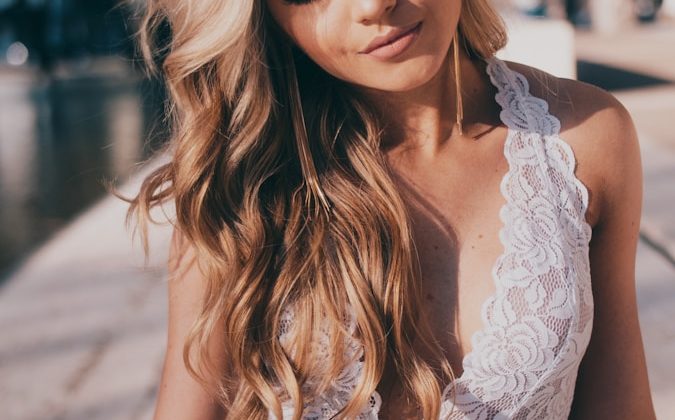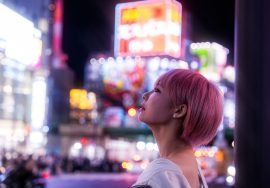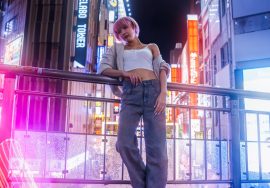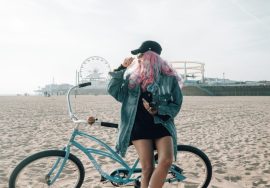
Pattern Perfect: Mastering the Art of Mixing Prints Without Going Overboard
Fashion has always been a form of self-expression, a canvas where personality meets creativity. While neutral wardrobes and minimalist aesthetics will always have their devotees, there is something undeniably magnetic about a well-executed print mix. From stripes with florals to plaid paired with polka dots, mixed patterns have moved from daring runway experiments to wearable street-style staples. Yet for many, the thought of combining bold prints feels like stepping into a fashion minefield. Too much, and you risk looking chaotic; too little, and the impact gets lost.
The art of mixing prints is about confidence, balance, and understanding visual harmony. Done right, it transforms your wardrobe into a playground where every outfit tells a story. Done poorly, it can look unintentional. This guide takes you beyond the “don’ts” and into the joyful world of patterned play, helping you understand how to mix prints without overdoing it.
The Psychology of Prints: Why Pattern Play Works
Before diving into the how-to, it’s worth understanding why mixed prints draw so much attention. Patterns are inherently eye-catching because our brains are wired to seek out repetition and symmetry. Mixing prints creates visual interest through contrast—stripes against florals, checks against animal prints—giving the outfit a sense of movement and energy.
But our brains also crave order. That’s why clashing patterns can feel overwhelming if they lack cohesion. Successful pattern mixing strikes a delicate balance between variety and unity: enough difference to excite the eye, but enough common ground to feel intentional.
- Start Small: Accessory-Level Experimentation
If the idea of walking out in head-to-toe mixed prints makes you nervous, start small. Accessories are your safest playground for experimentation. Think patterned scarves, belts, handbags, or shoes that contrast or complement your outfit’s main print.
Example: Pair a floral dress with a striped headband or polka-dot shoes.
Why It Works: Accessories create a contained space for pattern play without overwhelming the overall look.
Small-scale experimentation also helps you identify which patterns you naturally gravitate toward, building confidence for bigger, bolder combinations later.
- The Rule of One Dominant Print
One of the simplest ways to avoid visual overload is to anchor your outfit with a single dominant pattern. This primary print becomes the “star of the show,” while the secondary print serves as a supporting act.
Example: A large, colorful floral skirt paired with a subtle black-and-white striped t-shirt.
Why It Works: The eye focuses first on the bold floral, while the stripes act as a neutral texture instead of competing for attention.
Dominant patterns usually have larger motifs, brighter colors, or bolder contrasts. Supporting patterns are smaller, subtler, or neutral in tone. Keeping this hierarchy in mind prevents your look from feeling chaotic.
- Stick to a Cohesive Color Palette
One of the fastest ways to pull multiple prints together is through color. Even wildly different patterns can look harmonious if they share at least one or two colors in common.
Example: A navy-and-white polka-dot blouse paired with a navy plaid skirt works because the navy threads everything together.
Advanced Play: For more daring combinations, pick one print in a neutral color (like black and white) and let the second pattern introduce bolder hues.
This approach also makes pattern mixing more versatile, as you can lean on wardrobe staples rather than buying entirely new statement pieces.
- Pair Different Scales for Balance
Another key principle in mastering pattern play is scale contrast. Mixing two patterns of similar size can feel busy because the eye doesn’t know where to land. Instead, pair a large-scale print with a smaller, more delicate one.
Example: Oversized tropical leaves on a skirt with a micro polka-dot blouse.
Why It Works: The large print grabs attention first, while the smaller print adds texture without competing for dominance.
Think of it like music: one instrument carries the melody, while the other adds rhythm and depth.
- Mix Classic with Playful
If you’re still unsure how to dip your toes into bold combinations, start with classic prints. Stripes, checks, polka dots, and houndstooth are timeless and act as a “neutral” when mixed with more whimsical designs like florals, animal prints, or abstract patterns.
Example: A leopard-print skirt with a crisp black-and-white striped shirt.
Why It Works: The stripes provide structure, grounding the wildness of the leopard spots.
Classic patterns also make the outfit look intentional, as though there’s a fashion logic behind the visual experiment.
- Use Layers to Your Advantage
Layering is one of the easiest ways to explore pattern play without committing to full coverage. Jackets, cardigans, and coats can break up competing prints, giving your eyes space to rest.
Example: A gingham dress layered under a solid-colored blazer with a floral scarf.
Why It Works: The solid blazer acts as a buffer, creating visual separation between the two patterns.
Outerwear can also help tone down riskier combinations, making them more wearable for everyday settings.
- Don’t Forget About Texture
Pattern mixing doesn’t have to be limited to printed fabrics. Incorporating texture can mimic the effect of a pattern without introducing new colors or motifs. Quilted jackets, cable-knit sweaters, or embossed fabrics add visual complexity while maintaining harmony.
Example: A striped blouse paired with a tweed skirt feels layered without actually mixing competing prints.
Bonus: Textured fabrics also add depth to monochromatic outfits, allowing you to play with pattern without any fear of clash.
- Confidence: The Invisible Accessory
Perhaps the most important rule in mixing prints is wearing your creation with confidence. Fashion thrives on attitude—when you look self-conscious, the outfit suffers. When you own it, even unconventional combinations can feel like high style.
If you’re nervous, start with a mirror test: snap a quick photo of yourself in your outfit. Seeing the look in a frame, rather than just a reflection, can help you decide whether it feels balanced or needs adjustment.
- Learn from Street Style and Runway Inspirations
Studying how stylists and fashion influencers mix patterns can provide inspiration and teach you the nuances of proportion and pairing. Notice how they often balance one bold element with grounding pieces, or how they repeat a color subtly to tie the look together.
Tip: Save outfits you admire on social media and analyze why they work. Is it the color repetition? The contrast in scale? The use of neutral accessories? Breaking it down will train your eye to mix prints naturally.
- Break the Rules—But Do It Intentionally
Once you’ve mastered the foundational tips, you can start breaking them on purpose. Fashion is, after all, a form of play. Try mixing two loud prints with clashing colors if that’s your style—but do it with purpose. Adding a unifying accessory, like a belt or neutral shoes, can make even the most rebellious combination feel curated.
Some of the most memorable looks come from bending the rules while maintaining balance. The key difference between intentional eclecticism and accidental chaos lies in your attention to proportion and cohesion.








